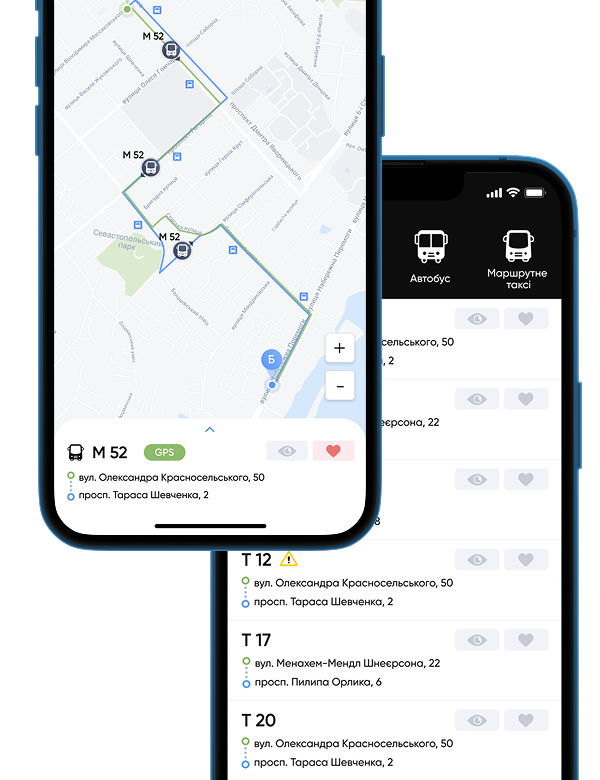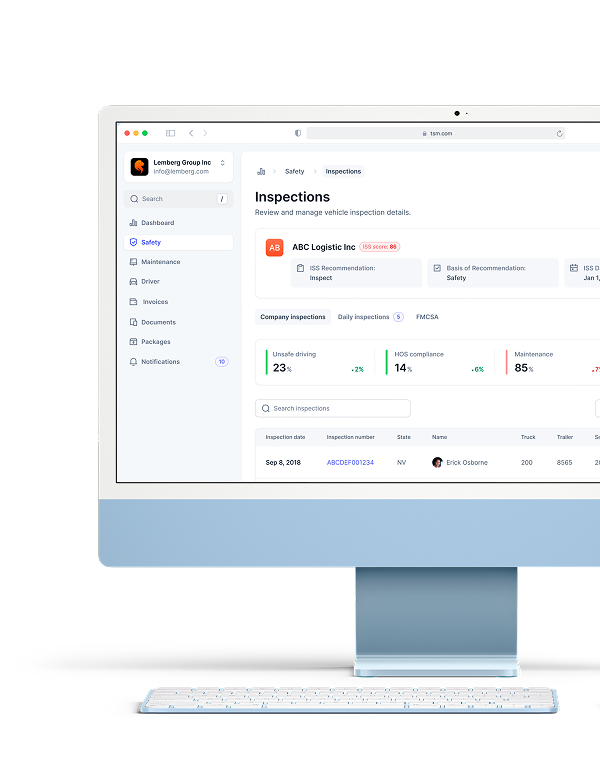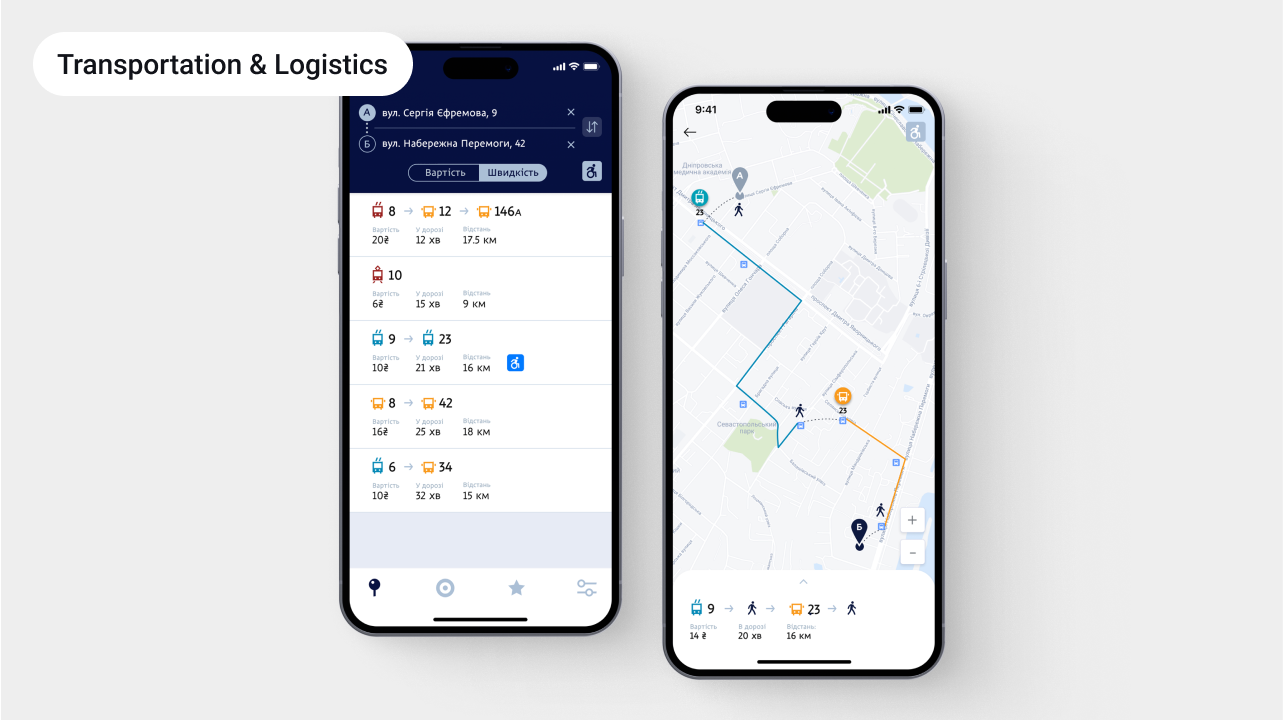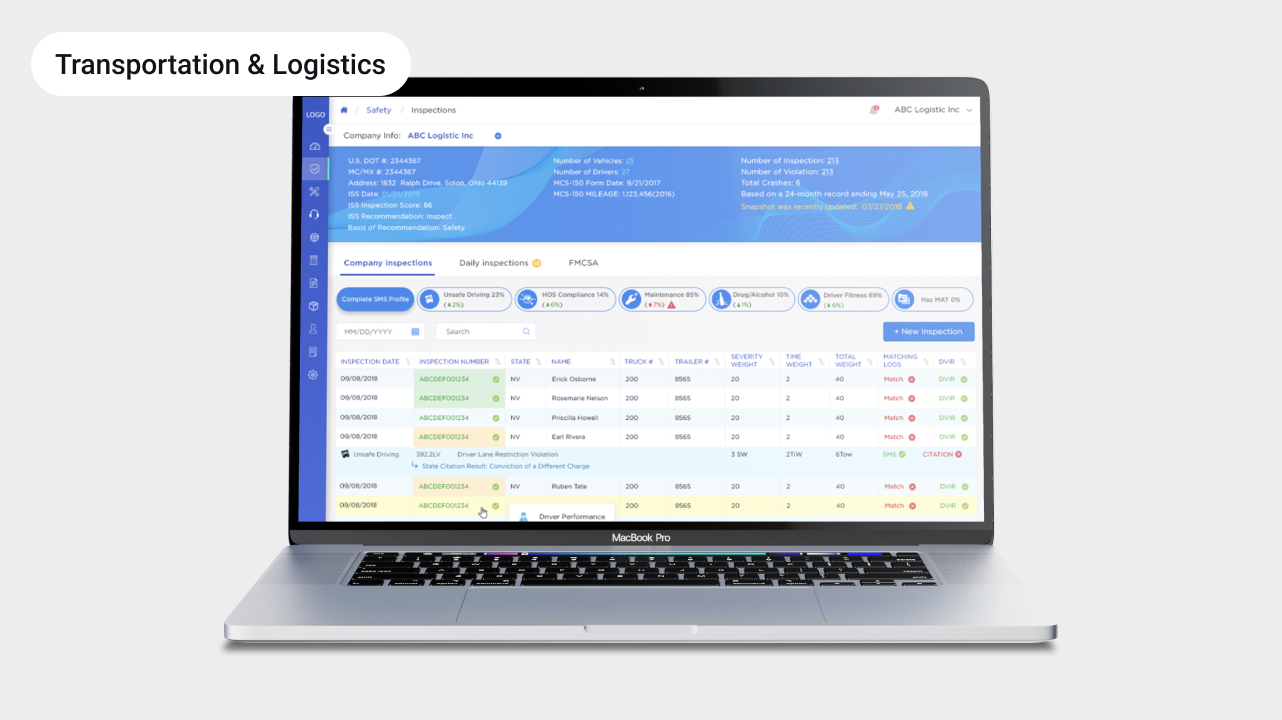Custom Traffic Management Software Development
The need to manage traffic in or around a location is often a good sign of the community’s growth and role – but also a challenging task. Modern technology makes it possible to analyze traffic patterns, but that’s only the beginning of the actual work. Where does that information go next?
We develop custom traffic management applications and platforms that address different endeavors, whether reducing travel time, establishing efficient traffic routines, increasing road safety, or simply communicating traffic information to passengers or local businesses.

REMEDIATE TRAFFIC MANAGEMENT COMPLEXITIES
Optimizing traffic flow and reducing congestion
The data that comes from sensors, cameras, and GPS can be used to analyze traffic density in real time. Then, a custom traffic management system can use algorithms to either provide information for rerouting vehicles or adjust signal timings. In practice, this allows for about 1/5-1/4 reduction in travel time and an overall harmonization of traffic patterns.
Enabling real-time traffic monitoring
A crucial output for traffic data, custom dashboards and analytics tools enable real-time visibility into road conditions, as well as unusual activity. The main factor is how well the dataviz tool is designed to turn raw data into insights that are actually useful.

Improving incident detection and response times
Years of previous classification of road hazards are yielding results, since custom systems can now flag them (and the linked accidents) automatically based on what comes through CCTV, IoT or connected vehicles. Then, operators and first responders can get alerts, so that response times are shorter.
Enhancing road safety
Prevention is better than cure; this axiom is now turned into reality in traffic management through AI models that predict high-risk zones. These suggestions can then be turned into actions for speed enforcement and warning systems.
Facilitating compliance reporting
One of the positive byproducts of automation is that data is collected throughout the process, meaning it can be also used for regulatory reporting on emissions, tolling data, etc., minimizing errors and ensuring timely submissions.
TRAFFIC MANAGEMENT SOLUTIONS WE DELIVER

Urban Traffic Control Systems
An urban traffic control system wraps several important functionalities in one package: IoT, algorithms, and central control. All this is then used to coordinate intersections and manage traffic through signals and other means. These systems require expertise in real-time data ingestion and distributed architecture, as well as (typically) integrations with legacy systems in place.
Guidance and Navigation Tools
These tools use GPS data, AI/ML models for traffic prediction, and geospatial APIs to route vehicles in real time. They range from the now-familiar consumer apps to systems that integrate with municipal platforms or logistics software for seamless functioning. For this to work, there’s a fair amount of data standardization to take place, and then it is wrapped in mobile applications with cloud-based back end.
Variable Message Signs (VMS)
VMS serve to integrate roadside hardware with centralized management platforms through specialized protocols like NTCIP and secure IoT connectivity. Special consideration here is given to outage cases with fail-safe redundancy.
Data Dashboards
Traffic data dashboards are built on big data pipelines, cloud storage, and visualization frameworks, with role-based access control and UI/UX tailored for traffic operators and planners. Features like interactive filtering, predictive overlays, and reporting automation are especially useful.
AI-Powered Traffic Modeling and Simulation
Getting an AI model to forecast traffic scenarios involves collecting and cleaning multimodal data and using agent-based simulation engines. The result is predicting congestion, but also evaluating other scenarios like infrastructure changes. These tools often run in cloud-native environments for elasticity, supporting rapid experimentation and large-scale simulation runs.
Passenger-Facing Apps
Passenger apps bring real-time transit data, route planning, and ticketing into a single mobile-first interface. They typically integrate GPS and IoT feeds from vehicles, open data APIs from municipalities, and payment gateways, all connected through a cloud-based back end. Many implementations also leverage push notifications and AI-based personalization to improve the passenger experience and reduce uncertainty in public transport usage.

Beyond Traffic Flow Monitoring: Popular Features
-
Adaptive traffic signal control
Smart signals that adjust in real time based on traffic flow, congestion, and incidents
-
Incident detection & alerts
Automatic identification of accidents and hazards based on data from cameras and sensors and AI predictions
-
VMS control
Real-time updates for drivers on congestion, detours, or weather conditions
-
GPS-based navigation & guidance tools
Allow drivers to reroute vehicles based on live conditions.
-
Camera & sensor data integration
Can include video surveillance, ANPR (license plate recognition), and radar feeds
-
Traffic flow & congestion analytics
Real-time and historical analytics to identify bottlenecks
-
AI-powered modeling & simulation
Predictive tools for traffic demand, event planning, and digital twins
-
Public transit priority modules
Used to give buses green light priority for improved scheduling
-
Pedestrian & cyclist safety systems
Smart crossings, signal adjustments, detection systems
-
Environmental monitoring & emission tracking
Air quality sensors and emissions data tied into dashboards
-
ICM (Integrated Corridor Management)
Cross-network coordination across highways, arterials, and public transit
Our Traffic Management System Development Services
- Traffic management software consulting
- System architecture design
- Custom web development
- Mobile app development
- AI/ML integration for traffic prediction
- IoT and sensor integration
- Cloud-based traffic data platforms
- System modernization and migration
- Third-party integrations (ERP, GIS, navigation platforms)
- Data analytics and dashboard development
- QA and performance testing
- Cybersecurity for traffic systems
- Ongoing support and maintenance
Results with custom solutions

TECH STACK

.NET

MongoDB

PostgreSQL

RabbitMQ

Docker

Identity Server

React

Redis

Angular

Vue.js

Flutter

Node.js

Java

TensorFlow

PyTorch

Azure
Why choose us

-
The leading web development service company
-
89 successfully launched startups
-
4.9/5 Clutch ratingView on
-
75% of our talent are Middle and Senior specialists
-
Agile approach
-
Strong knowledge of English
-
Large talent pool
-
Progressive technologies
Choose your collaboration model
We offer different models for custom logistics software development so that they match the nature of your project, while providing the necessary level of involvement in the development process.
Product development
Turn your vision into reality with a complete team of developers and other specialists.
Dedicated team (projects)
Access skilled developers to outsource selected scopes of work for higher efficiency.
Team augmentation & extension
Fill in gaps in your team with niche specialists functioning as project team extension.
To find a perfect solution












